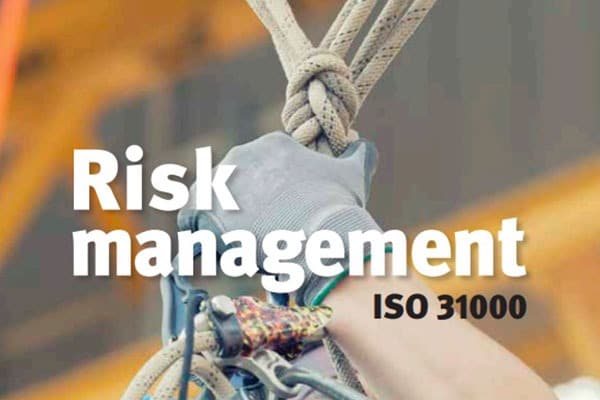info@gcc.com.kw
Kuwait City - Al-Mirqab - Abdullah Al-Mubarak Street - Star Tower - Fifth Floor
- info@gcc.com.kw
- Kuwait City - Al-Mirqab - Abdullah Al-Mubarak Street - Star Tower - Fifth Floor
4 Great reasons to adopt the ISO 31000 risk management standard
Whether you’re a seasoned risk professional or just getting to grips with risk, ISO 31000 is a great resource, now widely adopted around the world. It is blissfully concise and clear, offering a flexible way to implement common-sense risk management.
– ISO 31000 has an accessible structure, including:
Simple terminology definitions, with a separate ISO 31000 guide 73 reference document covering additional risk vocabulary. A Principles section describes the purpose and characteristics of risk management across the organization. The focus is on risk management as a tool for creating and protecting value, recognizing the influence of human and cultural values and the need for customization to fit your business. It presents risk management as an integrated, structured, inclusive and dynamic discipline, using the best information and focusing on continuous improvement.
The Framework section has strong links to governance and decision-making, with leadership and commitment at its core. As expected from a quality standard, it focusses on integrating, designing, implementing, evaluating and improving risk management across the organization.
The risk process, with its familiar central pillar of Context, Assessment and Treatment elements, is surrounded by Communication, Monitoring and Reporting activities.
The guide succinctly covers the “why” (Principles), the “how” (Framework) and the “what” (Process) of risk management.
– ISO 31000 supports risk engagement across the whole business:
The International Standards Organization describes ISO 31000 as “applicable to all organizations, regardless of type, size, activities and location, and covers all types of risk. It was developed by a range of stakeholders and is intended for use by anyone who manages risks, not just professional risk managers.”
It balances the mechanics of risk (process steps) with the business imperative of raising risk to the level of strategy and objectives.
It is non-partisan regarding risk techniques, which are instead covered – these are covered in the very useful IEC/ISO 31010 standard. Using IEC/ISO 31010 the inexperienced can learn, and the gurus can debate the pros and cons of different risk assessment methods, without complicating the core “Why”, “How”, “What” messages of ISO 31000.
In a fast-changing world, the guide points to having an integrated view of risk, providing a platform for informed decision making.
– ISO 31000 is easily adaptable to your business:
Unlike other ISO standards, ISO 31000 provides guidance rather than being a certification platform. Since every business has different objectives, structures and competitive positioning, there can be no one size fits all approach to risk. ISO 31000 offers a single standard that can be applied to all parts of your business, regardless of industry sector, type or location.
Despite being concise, the standard is not lightweight. Its value lies in being applicable to any part of a business, whether small or large. Projects, programmers, business units, departments and functions can apply ISO 31000 in their own way while conforming to overall business requirements for risk management.
Every organization has a unique risk profile, making the flexibility of ISO 31000 a significant reason for its widespread adoption across the globe.
– ISO 31000 is easy to implement.
As a leading Risk Software provider, we understand how important it is that our Risk Management and Analysis software (Predict!) embraces the ISO 31000 Standard’s Principles, Framework and Process steps. Predict! delivers this within a seamlessly integrated working environment that focuses on speed, simplicity and a great user experience that encourages engagement.

Predict! facilitates ISO 31000 Standard’s approach by:
Why ISO 31000 is Important to Organizations Nowadays?
Risk analysis, we make them everyday. Crossing the street, deciding to fasten our seat belt or not, starting early to arrive on time to important appointment. But when it comes to risks that occur in companies, a more formal approach is required. Risk analysis can anticipate problems. By adding risk analysis in key business processes, one can commit to steps that ensure that anticipated problems do not occur or steps that respond if they occur. The time and money can be very crucial. A generic risk assessment process has been defined in ISO 31000. This approach can be applied to all types of risk through any kind of organization.
For the organization that will have an effective implementation of ISO 31000, the risk management will provide the following advantages:
We are happy to answer your questions , inquiry or your request.
